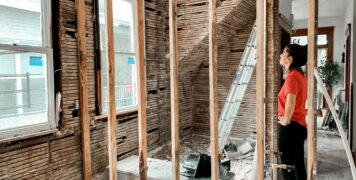Contact
020 4515 6728
info@ccameron.co.uk
Charles Cameron & Associates
Blackfriars Foundry
154-156 Blackfriars Road
London SE1 8EN
The devil’s in the detail
April 3, 2024
Information published was correct at the time of writing
Understanding mortgage valuations

A mortgage valuation is a process initiated by your lender when you are applying for a mortgage or considering a remortgage. This valuation aims to ascertain whether the property’s price matches its actual worth and calculate the loan-to-value (LTV) ratio.
DECODING MORTGAGE VALUATIONS
When you apply for a mortgage, your lender commissions a valuation survey or mortgage valuation. This process assesses if the property’s asking price aligns with its real value. Furthermore, it helps lenders determine the LTV ratio – the amount you wish to borrow in relation to the property’s value.
The LTV ratio impacts the mortgage rates you qualify for; a lower LTV means a wider range of mortgage options. It’s worth noting that lenders may also commission a mortgage valuation during a remortgage process.
DISTINGUISHING MORTGAGE VALUATIONS
To avoid misunderstanding, it’s crucial to distinguish mortgage valuations from house price valuations and house surveys. House price valuations are conducted by estate agents advising on the market price for your home, while house surveys assess a property’s condition before purchase.
By contrast, mortgage valuations primarily serve the lender’s interests. The lender will insist on using a trusted company, and you’re unlikely to see the report. You’ll also bear the cost unless the lender offers a free valuation.
WHAT DOES A MORTGAGE VALUATION SURVEYOR LOOK FOR?
The approach to mortgage valuations varies depending on the type of valuation the lender instructs the surveyor to perform. Traditionally, surveyors would visit the property, but with technological advancements and post-COVID changes, more valuations are being done remotely.
The lender decides the type of survey conducted based on various factors, such as potential lending issues or lack of information about the property.
THE SURVEYOR’S VISIT TO THE PROPERTY
If a surveyor visits the property, they typically spend around 15-30 minutes identifying any conspicuous defects that might affect its value. Postvisit, the surveyor provides their opinion on the property’s market value based on historical sales of similar properties and their market knowledge.
They may also offer insight into the ‘minimum reinstatement value’, which is the property’s rebuild cost. This information can be beneficial when seeking buildings insurance.
DRIVE-BY AND DESKTOP APPROACH
How exactly do drive-by and desktop valuations work? It’s simpler than you might think. As the name suggests, desktop valuations can be performed from the comfort of a desk. These use publicly available data, such as Land Registry information, property portal archives and even satellite imagery.
A valuation figure is derived by analysing the sale prices of similar local properties. This process is often assisted by an Automated Valuation Model (AVM), an index-linked system that estimates values based on fluctuations in house prices within a specific area or postcode.
ON-THE-ROAD ASSESSMENTS
In some instances, a ‘drive-by valuation’ may be conducted. This involves a surveyor assessing the exterior of the property. During this cursory inspection, they’ll look for significant issues – problems with the roof or walls, for instance – that could potentially impact the property’s value.
MORTGAGE VALUATIONS VS SURVEYS
One question that often arises is whether a mortgage valuation is the same as a survey. The answer is a resounding ‘no’. While both are important, they serve entirely different purposes. A mortgage valuation is conducted to reassure your lender that the property offers sufficient security for the loan. You might not even see the report.
HOUSE SURVEY THOROUGH INSPECTIONS
On the other hand, a house survey is a thorough inspection of the property’s condition, usually organised by the prospective buyer. The surveyor will identify any issues, from minor snags to significant structural problems, advising on necessary repairs and alterations. The degree of detail covered in your house survey depends on the type you choose.
VALUATION OF A HOUSE SURVEY
It can feel as though buying a house involves endless expenses, and viewing a survey as just another cost is tempting. However, they can prove invaluable, especially if they uncover potential problems with the property. If the house you’re considering fares poorly in a survey, you can negotiate repairs or reduce the asking price before you move in.
A DEEPER LOOK INTO VALUATION SURVEYS
Valuation surveys aren’t solely for mortgage applications processed by banks or building societies. They serve other purposes, too. You may require a valuation survey for probate if a property owner has passed away or during a divorce to ascertain an accurate property value. A valuation survey will be needed if you plan to sell, remortgage or buy a shared ownership home.
CHOOSING THE RIGHT SURVEYOR
It’s important to choose your surveyor wisely. Engage with prospective surveyors before committing and ensure they have the necessary qualifications, accreditation, experience and insurance. A Chartered Surveyor, identifiable by the MRICS or FRICS letters after their name, is a member of the Royal Institution of Chartered Surveyors (RICS). This guarantees professional standards in their work.
MORTGAGE VALUATION SURVEY COST FACTOR
The cost of a mortgage valuation survey usually depends on the property size, although some lenders charge a flat fee. Some lenders may include free valuations as part of a mortgage deal, but don’t let that be your sole deciding factor. A lower interest rate could save you more in the long run, even if you pay more for the mortgage valuation.
WHAT FOLLOWS A MORTGAGE VALUATION?
Post-mortgage valuation, the surveyor reports back to your lender with their property valuation. If they agree with the sale price or remortgaging amount, this can be a significant step towards mortgage application approval.
However, a completed mortgage valuation doesn’t guarantee approval. There could be other unmet requirements. Additionally, mortgage valuations can highlight issues such as a property’s poor condition affecting loan security or a lower property value than the offer price.
THE DOWNSIDE OF A DOWN VALUATION
A ‘down valuation’ can occur when a surveyor determines that a property’s worth is less than the agreed sale price. This might happen if house prices are plummeting more rapidly in certain areas, causing a disparity between what estate agents and sellers believe the property is worth versus the surveyor’s opinion.
When a mortgage valuation falls short of the agreed sale price, it can trigger significant issues with your mortgage offer. The lender may decide to reduce the amount they’re willing to lend you, and you might not be able to borrow at the same interest rate.
But what happens if the mortgage valuation is higher? Interestingly, there are instances when your mortgage valuation exceeds the purchase price. This usually indicates that the purchase price is lower than the market value.
Assuming that the valuation doesn’t present any problems and all application components are in order, you can expect your mortgage offer about a week after the valuation. However, this timeline can vary based on individual circumstances.
When it comes to a house valuation, what exactly do surveyors check? If the surveyor conducting the valuation believes the property warrants further investigation, they will inform the mortgage lender. However, remember that the level of detail regarding defects is limited, and you may not even see the report.
IMPACT OF DEFECTS ON MORTGAGE VALUATIONS
Regarding mortgage valuations, any defects identified could influence your lender’s decision to approve your application. They might require further investigation or insist that the issue be rectified before proceeding.
WHAT DOES A MORTGAGE VALUATION REVEAL?
Mortgage valuations are a crucial tool for lenders, flagging potential defects that may affect a property’s value. If you’re wondering what exactly these valuations seek out, let’s delve into some typical examples.
1. SUBSIDENCE ISSUES
Subsidence, whether merely suspected or actual, can be a significant concern. The feedback on this issue will vary based on the specific scenario. For instance, they could report structural movement and recommend a detailed examination by a structural engineer or chartered building surveyor.
This professional can provide a thorough report identifying the cause and the necessary remedial work costs to ensure future stability before a valuation can be finalised. They may also suggest seeking specialist advice if trees are close to the property.
2. A HIDDEN MENACE
If there is evidence of dampness, this could indicate a need for a damp and timber treatment contractor to investigate the full extent of the issue.
3. CONCRETE CONSTRUCTS
When a surveyor suspects that the property is concrete built, your lender might require an intrusive survey by a structural engineer or chartered building surveyor. This evaluation will confirm if the property was indeed constructed using concrete.
4. SPRAY FOAM INSULATION
Spray foam insulation, while effective, can stress roof timbers and restrict air circulation, potentially leading to rot. Surveyors are increasingly discovering spray foam insulation in lofts, necessitating its reporting. Despite good application, the insulation’s nature makes assessing the loft and roof condition challenging.
Consequently, surveyors typically recommend further investigation, leading mortgage lenders to withhold lending until the spray foam insulation is removed.
Don’t forget, our professional friendly advisors are on hand to support you and can help you explore all of your options.



